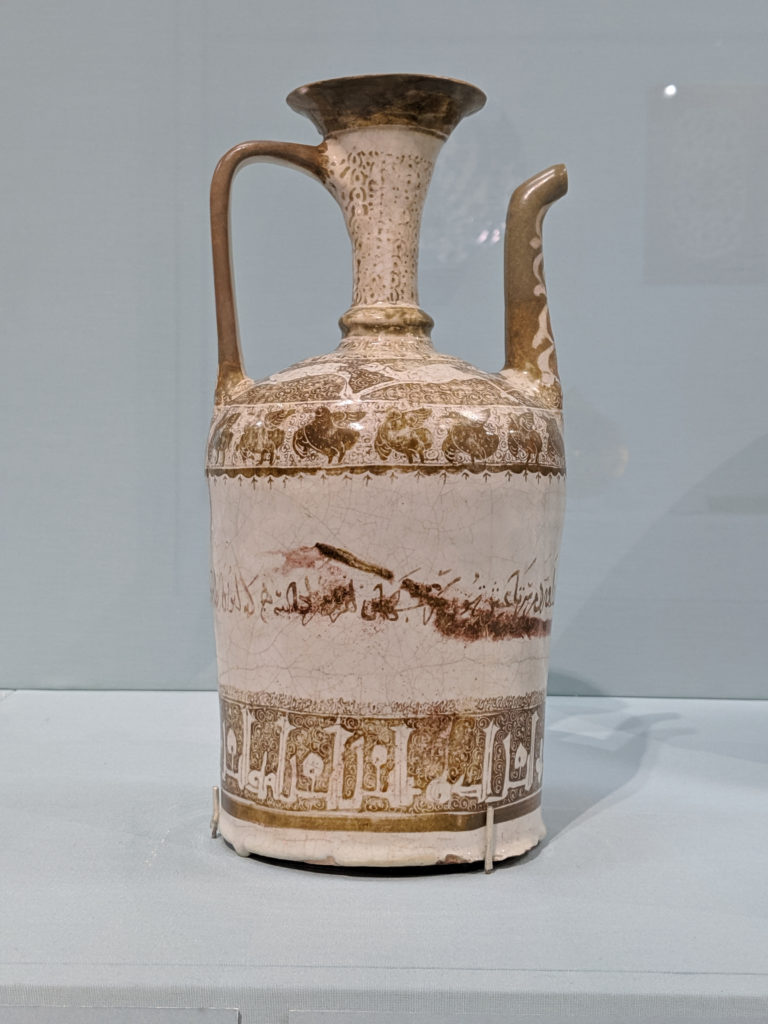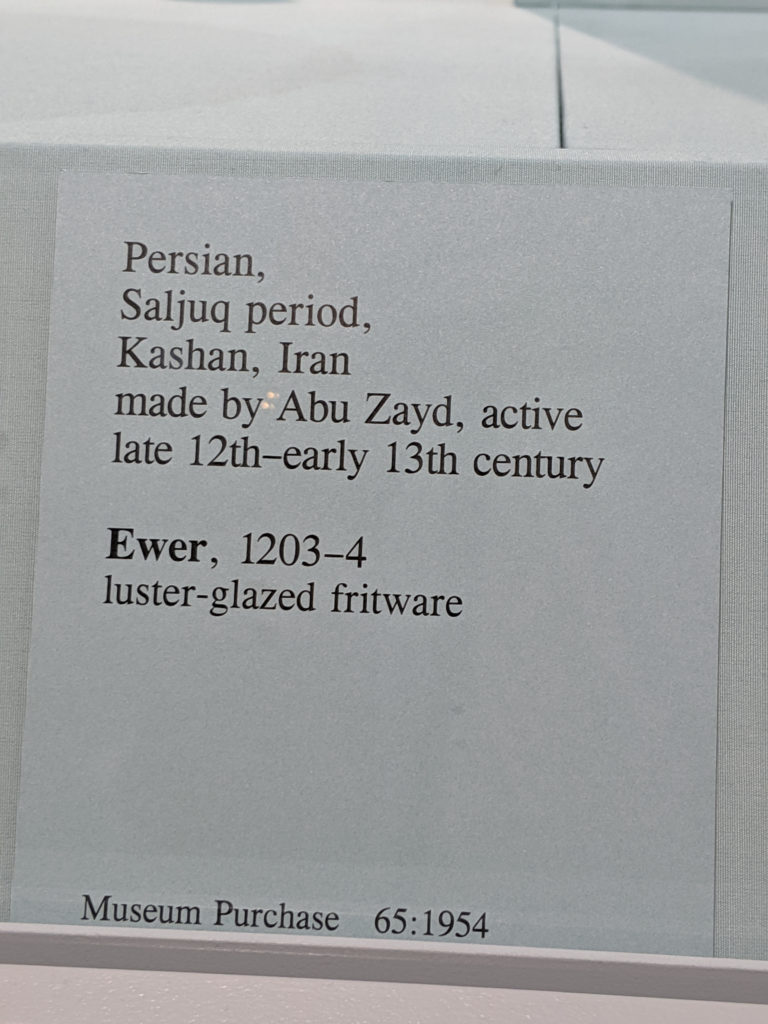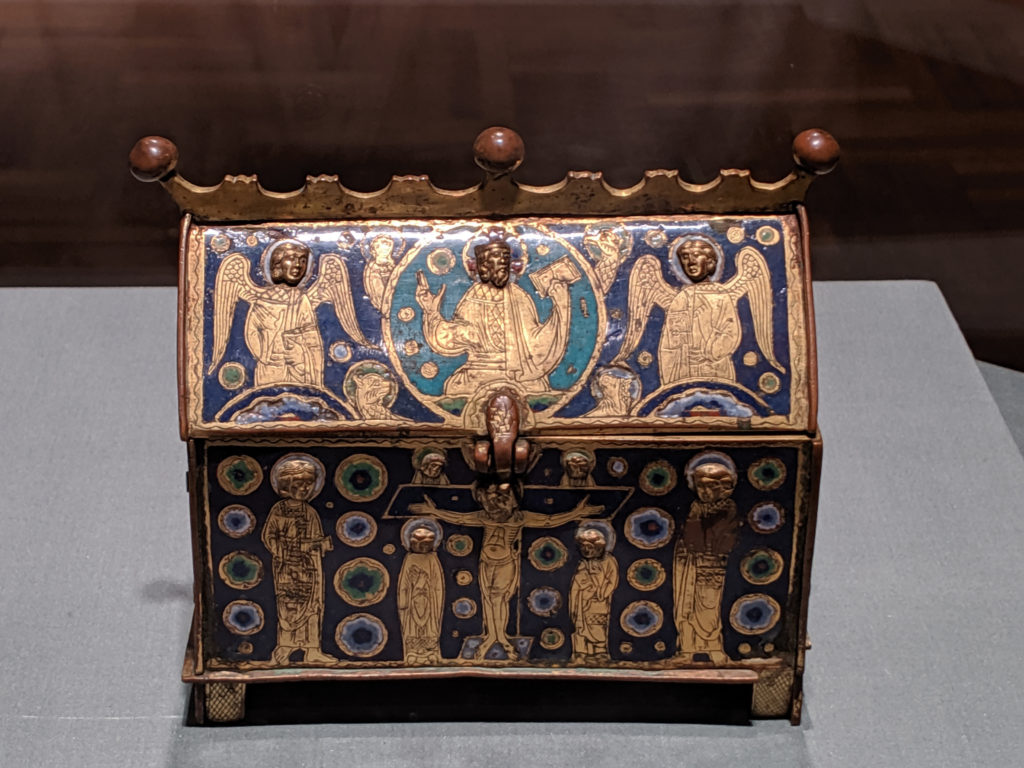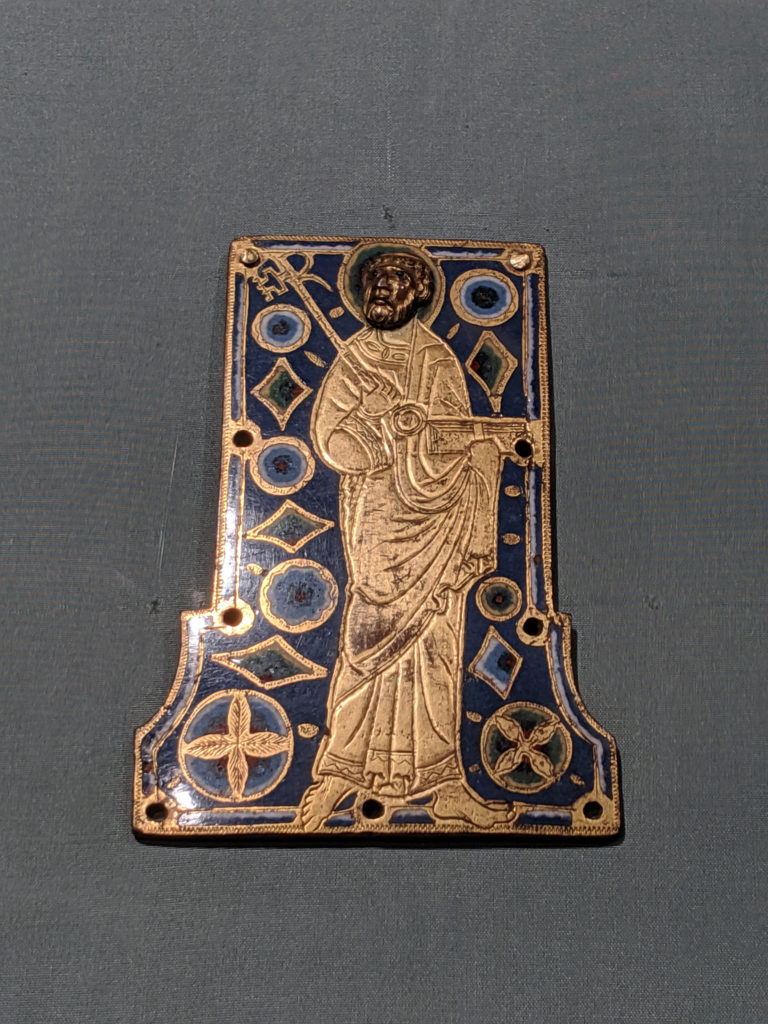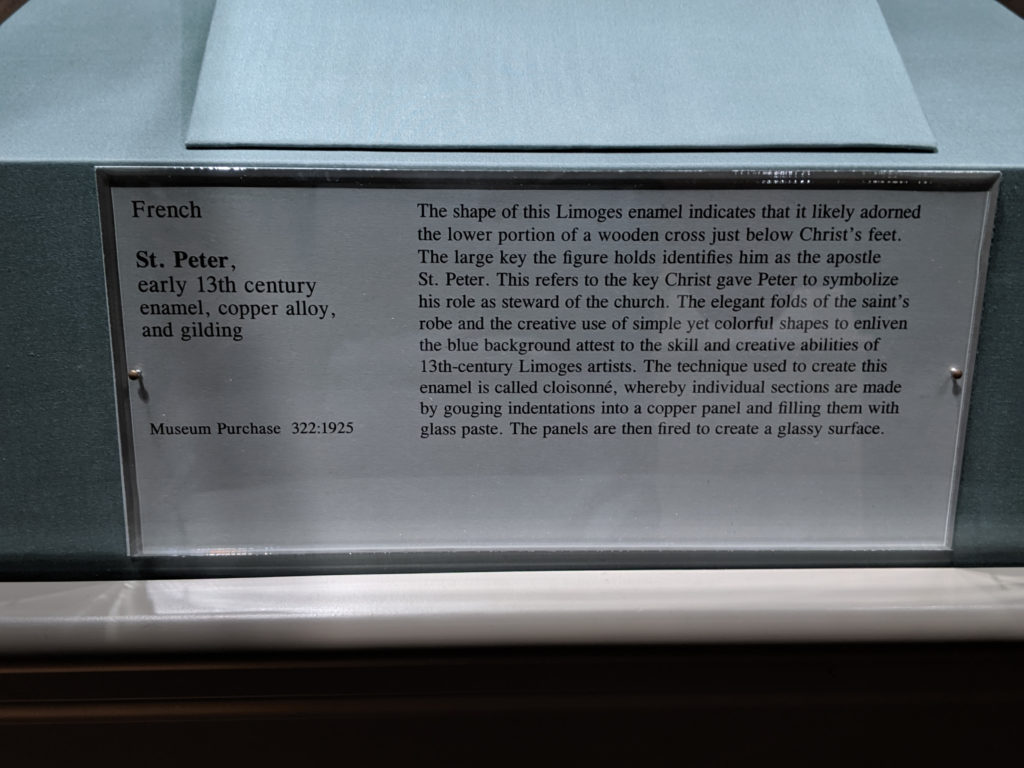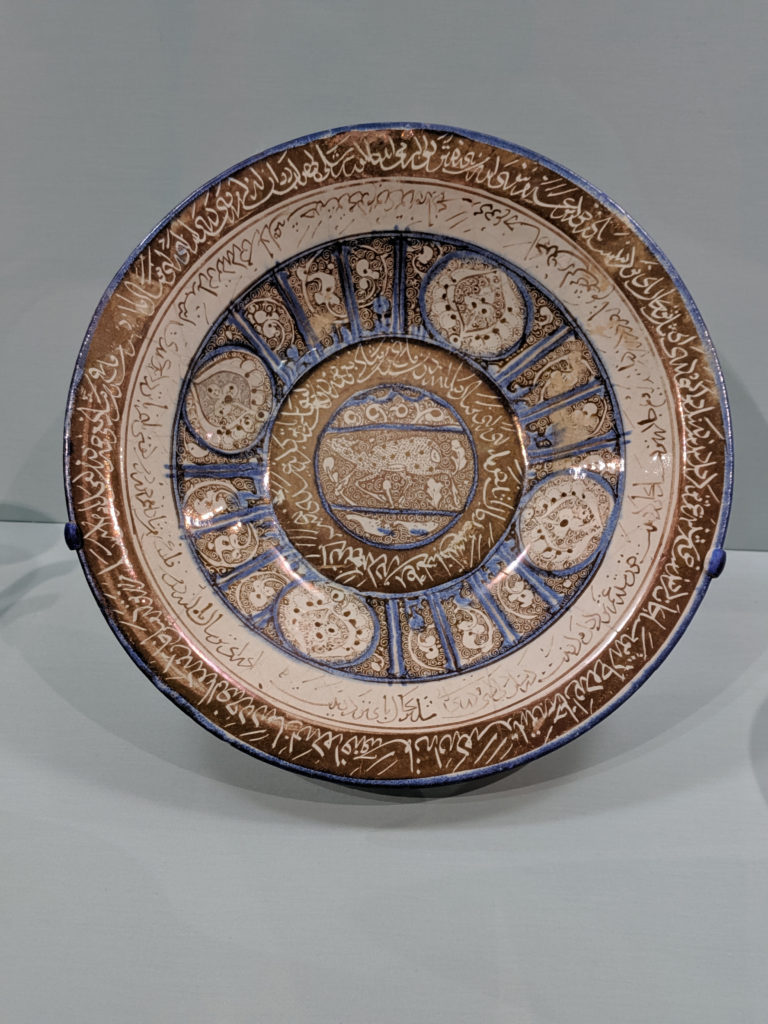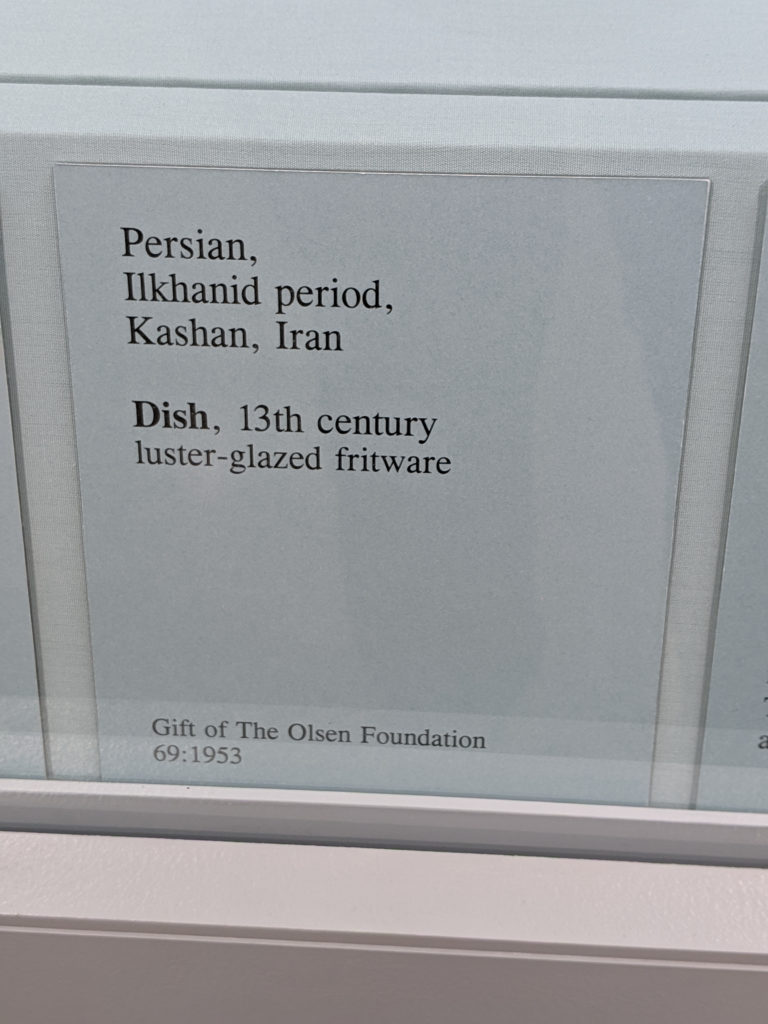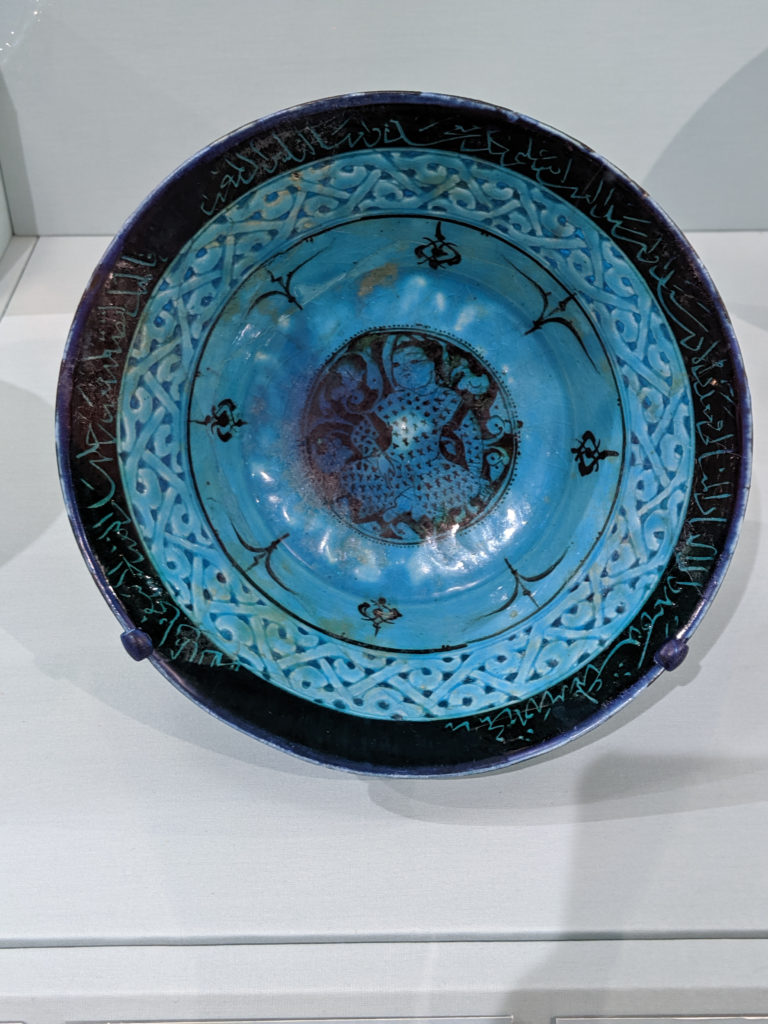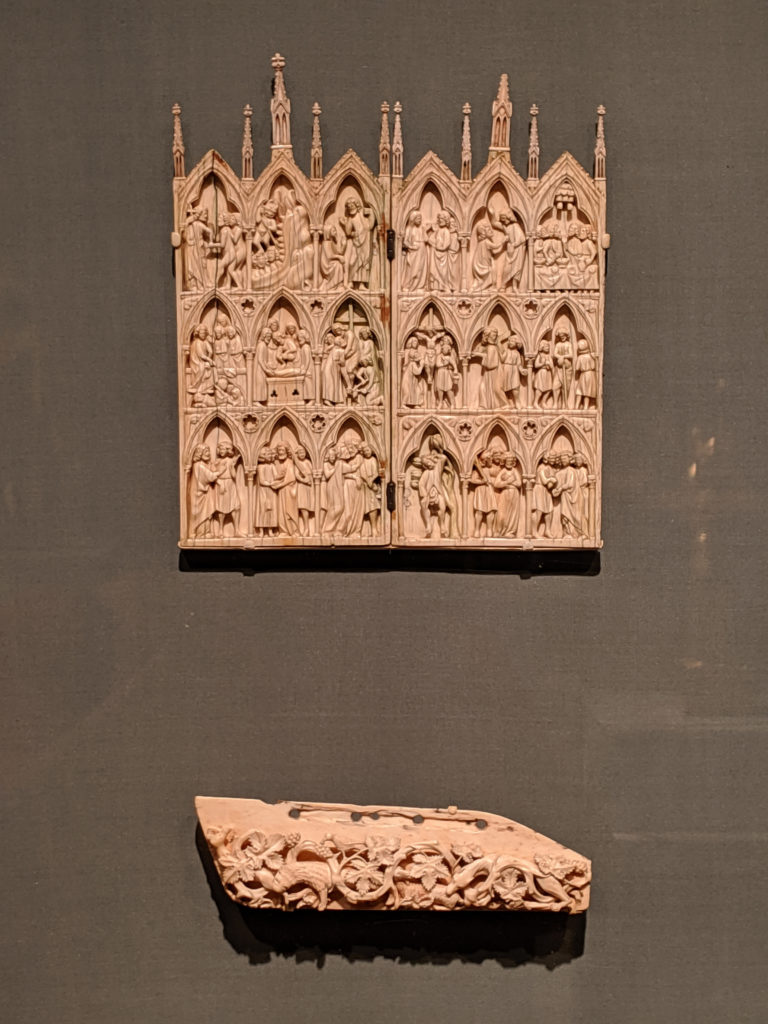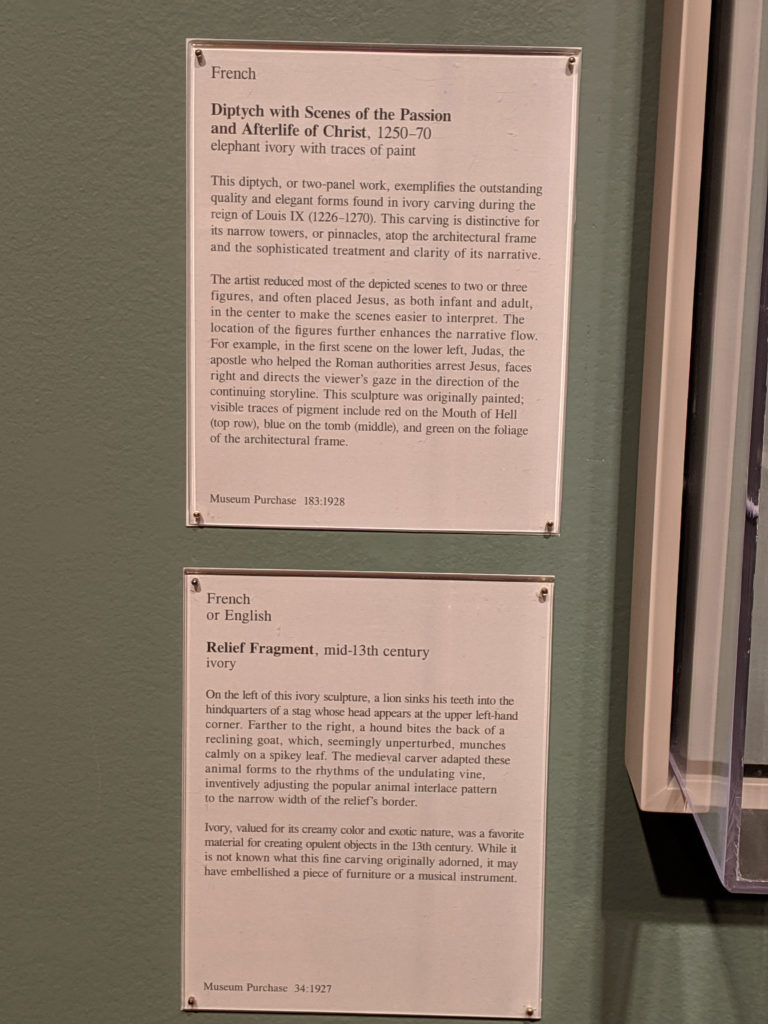The Persian fritware is so good at utilizing metallic glazes. I love this piece because it is so complex as to be abstract, and yet, is completely simple at the same time. It is a delightful example of its typical type.
Tag: 13th century
Thursday
If you know me at all, you know that religion is not my thing. I mean, yeah, I know the tenants of Christianity and I can recite a bunch of blah blah blah because I was brought up in it, but I’ll still always call this the ‘pretty Jesus box’ because I’m a sacreligious cow. And it is the pretty Jesus box.
Wednesday
What I really like about this is that you can tell it’s super experimental in form and style. They aren’t afraid to make mistakes and screw it up because they’re testing how it all works! This style of enameling is what would eventually become the master styles of Faberge in the last 19th and early 20th century, but, again, it took centuries of experimentation to get that far.
Monday
This is another example of naturalism mixed with calligraphic elements: the deer, the leaves, the flowers and vines, then the Words. It must be absolutely clear that the Words are the most important parts of the piece, not the other illustrative elements – they merely serve to underscore the rest of the point. The calligraphy is striking and handsome, and clearly meant to be the absolute focal point.
Tuesday
Monday
Once we come out of the so-called Dark Ages (or unenlightened times in Europe) and into the Medieval period, it all became about religious art and depictions of the natural world in many ways. Or religious art in natural materials. Either way, it was there to forward an agenda of pushing religion for those who could not read the word of God. Some of the art was beautiful (such as these pieces), and some of it was quite hideous.
